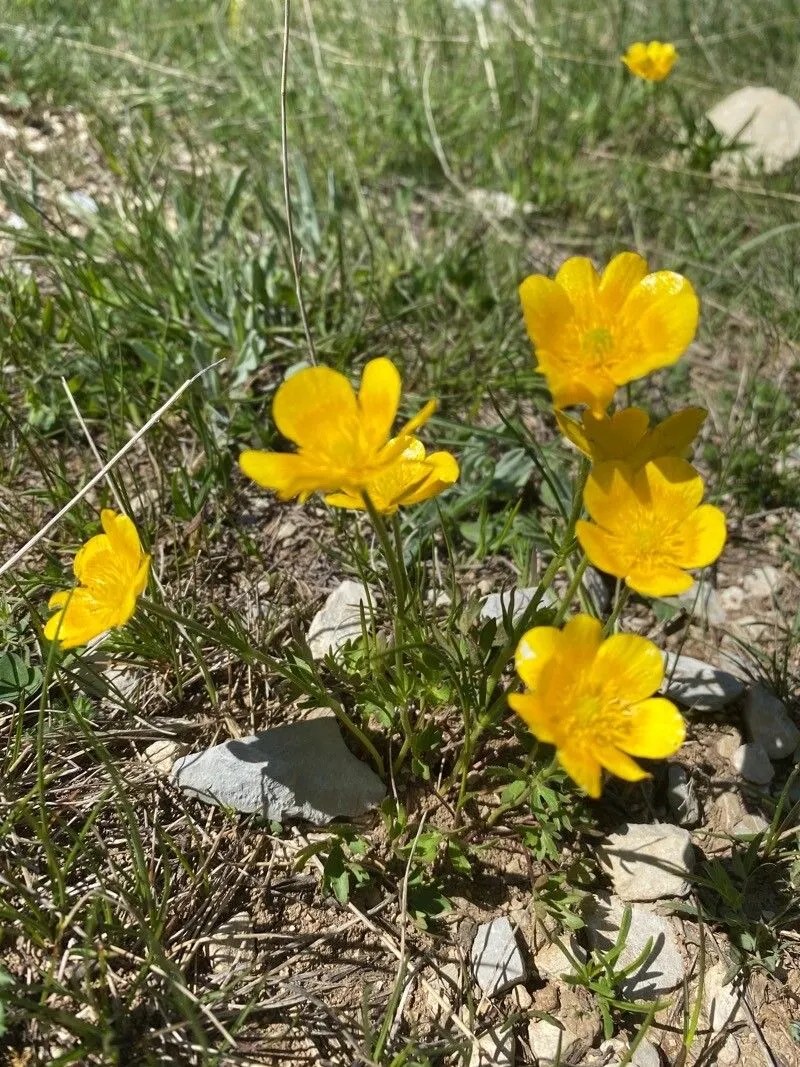
Author: Hoppe
Bibliography: J.Sturm, Deutschl. Fl. Abbild. 12: 46 (1826)
Year: 1826
Status: accepted
Rank: species
Genus: Ranunculus
Vegetable: False
Observations: Mts. of SC. & S. Europe
The Carinthian buttercup, scientifically known as Ranunculus carinthiacus, is a captivating and resilient plant belonging to the Ranunculaceae family. Described initially by Hoppe, this vibrant flora has secured its place in botanical history since its first detailed depiction in J. Sturm’s “Deutschl. Fl. Abbild.” (Volume 12, page 46, published in 1826).
This species is native to and thrives in the mountainous regions of South-Central and Southern Europe. The harsh, elevated terrain of these regions provides the ideal conditions for the Carinthian buttercup, allowing it to flourish amidst rocky outcrops and alpine meadows where other species might struggle to survive.
The Carinthian buttercup is distinguished by its striking yellow blossoms, which form a radiant contrast against the often stark and rugged landscapes it inhabits. These flowers are not just visually appealing but also play a crucial role in the local ecosystem, supporting a range of pollinators including bees and butterflies.
Recognizable by its glossy green leaves and sturdy stems, Ranunculus carinthiacus exhibits a remarkable fortitude and adaptability. Its ability to grow in such specific climatic conditions underscores its evolutionary success within the Ranunculaceae family, which is known for a wide array of species characterized by their beautiful yet sometimes deceptively fragile appearances.
While magnificently picturesque, the Carinthian buttercup also serves as an indicator of the health of its mountainous habitats. Its presence often signifies a pristine and balanced environment, free from excessive human interference and pollution.
In summary, the Carinthian buttercup (Ranunculus carinthiacus) remains a fascinating subject of study and admiration within the botanical world. Whether for its ecological importance, its evolutionary adaptations, or its sheer visual appeal, this plant continues to enchant those who encounter it in the highlands of South-Central and Southern Europe.
Deu: kärntner hahnenfuß
En: Carinthian Buttercup
Fr: Renoncule de Carinthie
De: Kärntner Hahnenfuß, Kärntner Berghahnenfuß
It: Ranuncolo di Carinzia
: Carinthian buttercup
Taken Jan 1, 1800 by Tela Botanica − Thierry Pernot (cc-by-sa)
Taken Jan 1, 1800 by Tela Botanica − Thierry Pernot (cc-by-sa)
Taken Dec 2, 2014 by Tela Botanica − Annie Juglas (cc-by-sa)
Taken May 12, 2022 by Francois Mansour (cc-by-sa)
Taken Jan 1, 1800 by Tela Botanica − Thierry Pernot (cc-by-sa)
Taken May 12, 2022 by Francois Mansour (cc-by-sa)
Taken Sep 29, 2022 by gabrielle kotewitz (cc-by-sa)
Taken Jul 15, 2007 by Photoflora – Jean-Luc TASSET (©)
Taken Jul 15, 2007 by Photoflora – Jean-Luc TASSET (©)
Taken Jan 1, 1800 by Tela Botanica − Thierry Pernot (cc-by-sa)
Taken Sep 29, 2022 by gabrielle kotewitz (cc-by-sa)
Taken Jan 1, 1800 by Tela Botanica − Thierry Pernot (cc-by-sa)
Taken Jan 1, 1800 by Tela Botanica − Thierry Pernot (cc-by-sa)
Taken Jan 1, 1800 by Tela Botanica − Thierry Pernot (cc-by-sa)
© copyright of the Board of Trustees of the Royal Botanic Gardens, Kew.
© copyright of the Board of Trustees of the Royal Botanic Gardens, Kew.
© copyright of the Board of Trustees of the Royal Botanic Gardens, Kew.
Ph maximum: 8.0
Ph minimum: 7.5
Light: 7
Atmospheric humidity: 6
Soil nutriments: 3
Family: Myrtaceae Author: (F.Muell.) K.D.Hill & L.A.S.Johnson Bibliography: Telopea 6: 402 (1995) Year: 1995 Status:…
Family: Rubiaceae Author: Pierre ex A.Froehner Bibliography: Notizbl. Bot. Gart. Berlin-Dahlem 1: 237 (1897) Year:…
Family: Sapindaceae Author: Koidz. Bibliography: J. Coll. Sci. Imp. Univ. Tokyo 32(1): 38 (1911) Year:…
Family: Asteraceae Author: A.Gray Bibliography: Pacif. Railr. Rep.: 107 (1857) Year: 1857 Status: accepted Rank:…
Family: Fabaceae Author: Medik. Bibliography: Vorles. Churpfälz. Phys.-Ökon. Ges. 2: 398 (1787) Year: 1787 Status:…
Family: Aspleniaceae Author: (Cav.) Alston Bibliography: Bull. Misc. Inform. Kew 1932: 309 (1932) Year: 1932…